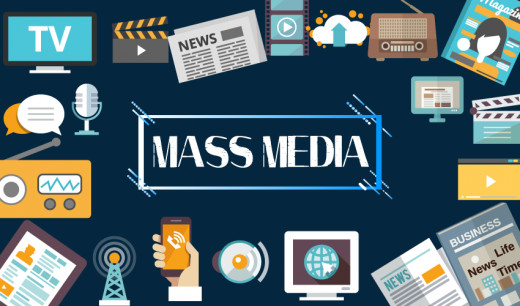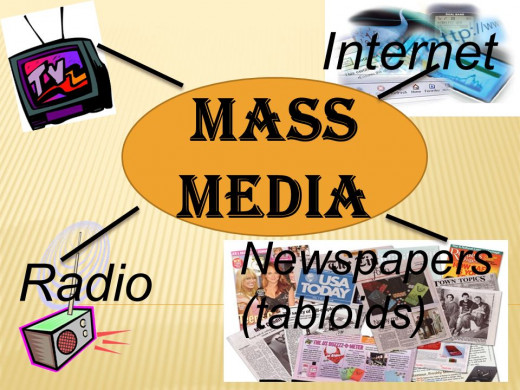How Technology and Innovation Is Changing the Mass Media Industry


From globalization, availability and rise of freelance resources and digitalization, today’s media industry is being affected from different angles. There are also major trends which are playing a role in shaping the media trajectory. What this implies is that a high level transformation is expected in the media industry in the near future.
In essence, communication and specifically the new forms of communication is today more than ever, largely depended on technology and innovation. For the past decade for instance, the mass media in most parts of the world has become more advanced and more useful for the audience. This advancement has been facilitated by media technology and innovation. Among these changes include changes in the manner in which content filters are handled, changes in the audiences, technology convergence, and analog-to-digital converters. The rise in technology has been so significant to the point that annual sales of print newspapers have declined to a great extent. In other words, there is a sharp fall in the sale of newspapers all over the world, thanks to availability of the information in other digital platforms. This has prompted a number of media houses to devise ways of coping with the new trend, especially on aligning themselves to the digital landscape.
Communication and mass media have been in existence since time immemorial. However, as the time is changing, so is the change in communication. In recent years for instance, the audience is increasingly going urban and mobile, thanks to advancement in technology. The social, political and geographical landscape has been greatly disrupted, affecting the communication and message transmission processes. Again, these new technologies have provided immense opportunities for public engagement and participation. In addition, they as well harbor the potential of expanding media use to higher levels. The change has been so tremendous to the point of common barriers that had been associated with conventional media have been removed by the digital technology. In this regard, time, distance, location and format are no longer issues of considerations. Instead, information and content is now instantaneous and can now reach any part of the world fast enough. Practically, the internet is now seen as the most crucial platform for developments related to convergence. It has also been considered as a driver of diverse changes in the media and mass communication fields.
Notable changes in the mass media include the increase in the reproduction capacity. The media companies are now able to reproduce higher number of copies and within a shorter time frame compared to earlier times. This has also enabled growth of independent publishing and specialized publications. With the new technological innovations, media companies are able to produce more newspapers at a shorter time. Consequently, the human resources have been reduced, further reducing the operational costs. This is the same case with the audiovisual production capacity which has greatly increased with the rising number of amateur production and huge industrialization processes. Apparently, the distribution of audiovisual content in P2P form has grown to tremendous level. Moreover, transmission capacity has also rose to significant levels with new communication channels being set up. Satellites have indeed, facilitated these new communication channels including cable networks and development of ether networks. The media has also experienced a rise in the capacity of data collection and processing, especially with the use of telematic processes.
For many years, publishers of magazines, newspapers and other forms of print products have been triggered to consider delivering information and news through electronic means. Consequently, the use of the internet, computer, mobile phones, tablet and other electronic means has proved to be beneficial not only to the media companies but also to the consumers of this information. Furthermore, it has now become possible for information to be delivered to readers almost instantly compared to if that information was to be printed on publication. It need to be considered that most of the information found in the newspaper is ‘history’ taking into account that its 12 hours old. In a monthly magazine for instance, most of the articles are written three to four months before publication. This has prompted the emergence and development of the techno journalist, which is essentially a novel breed of communication. Today’s journalism is practically different from that of the past. This is in terms of thoughts, working, and reporting. It also means that today and the future journalist is required to balance the use of the newfound technological gadgets with a humanistic sensitivity that generates best journalism. With the reality of digital media and the fall in consumption of tradition media, advertisers are now relying on the internet to promote their businesses. Digitalization has actually spurred growth in internet advertising. A survey by Nielsen Research Company finds that in the United States alone for instance, expenditure on digital advertisement reached $83 billion in 2017. This was generally a representation of a 16% rise in internet advertisement. This is also made possible by the accessibility of the internet in many places including on mobile phones, tablets, personal computers among others. According to Nielsen Research Company, mobile is anticipated to be the core driver of digital growth in the near future. The research noted that currently, mobile accounts for more than 70% of the digital media and approximately one quarter of the total media outlays. Furthermore, it is also noted that this growth in mobile phone use will increase in future, with mobile ad spending anticipated to exceed those on TV, radio and even print media.
In this age, there is no doubt that technology and digitalization has disrupted the media industry. The traditional media landscape is slowly giving way to the modern platforms that largely centers on the internet and more so the mobile. To survive on this industry, mass media companies are required to re-orient themselves towards digitalization and more so exploit the use of the mobile, and social media in reaching today’s audience. Furthermore, the use of new technologies must be balanced with a humanistic interest and sensitivity that guarantees the best experience for the media consumer.








